Debleena Sengupta
End-to-End Trainable Deep Active Contour Models for Automated Image Segmentation: Delineating Buildings in Aerial Imagery
Jul 22, 2020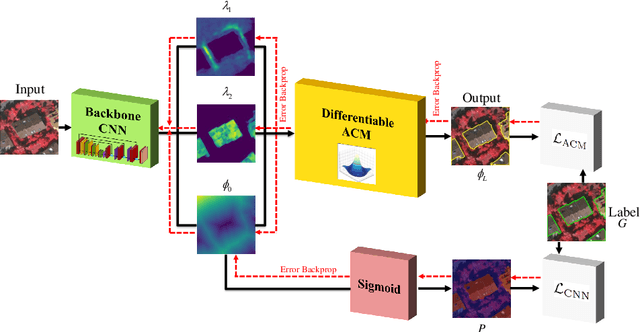
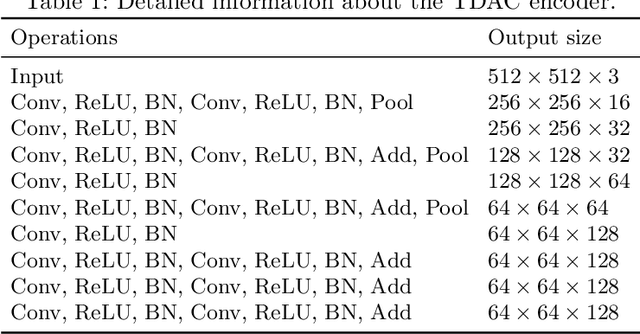
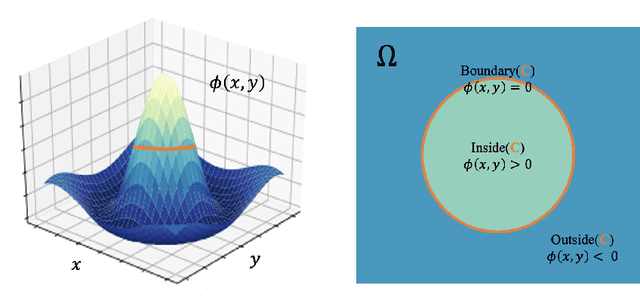
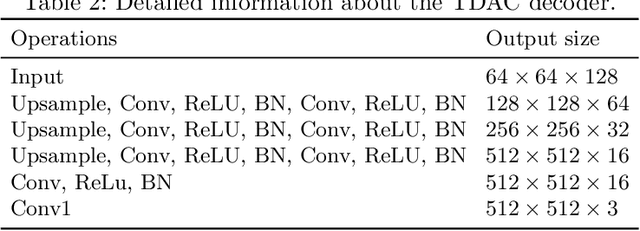
Abstract:The automated segmentation of buildings in remote sensing imagery is a challenging task that requires the accurate delineation of multiple building instances over typically large image areas. Manual methods are often laborious and current deep-learning-based approaches fail to delineate all building instances and do so with adequate accuracy. As a solution, we present Trainable Deep Active Contours (TDACs), an automatic image segmentation framework that intimately unites Convolutional Neural Networks (CNNs) and Active Contour Models (ACMs). The Eulerian energy functional of the ACM component includes per-pixel parameter maps that are predicted by the backbone CNN, which also initializes the ACM. Importantly, both the ACM and CNN components are fully implemented in TensorFlow and the entire TDAC architecture is end-to-end automatically differentiable and backpropagation trainable without user intervention. TDAC yields fast, accurate, and fully automatic simultaneous delineation of arbitrarily many buildings in the image. We validate the model on two publicly available aerial image datasets for building segmentation, and our results demonstrate that TDAC establishes a new state-of-the-art performance.
End-to-End Deep Convolutional Active Contours for Image Segmentation
Oct 04, 2019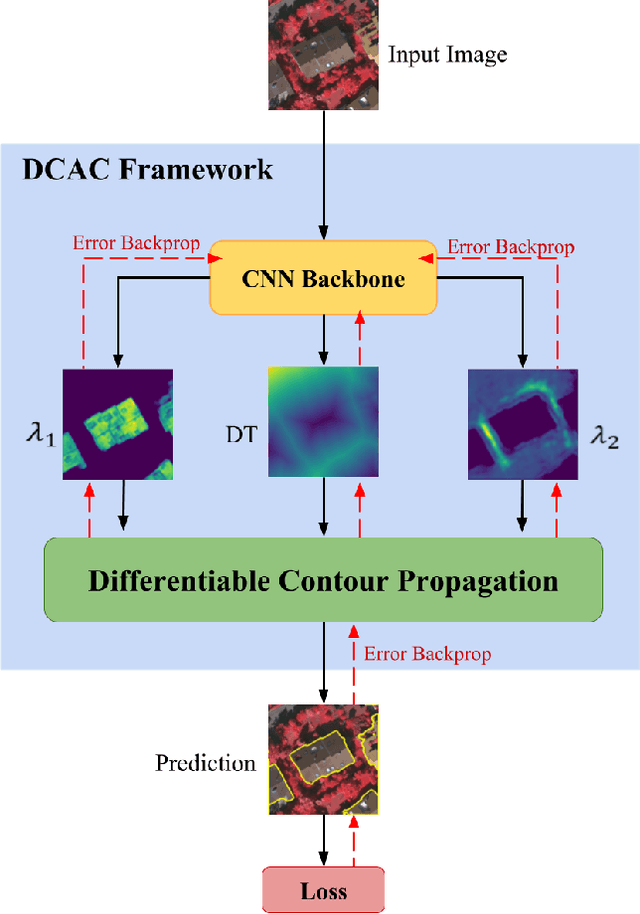
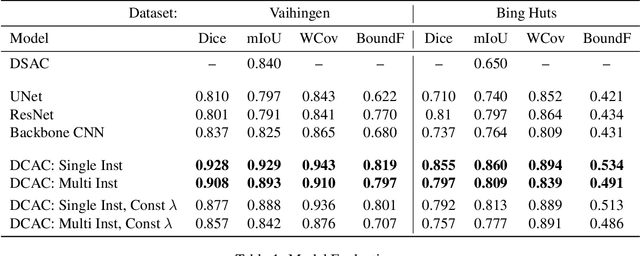

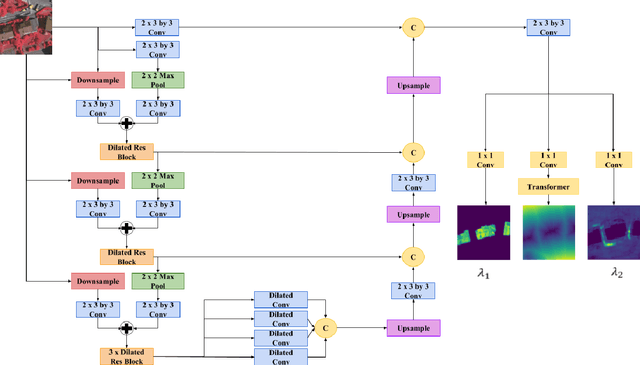
Abstract:The Active Contour Model (ACM) is a standard image analysis technique whose numerous variants have attracted an enormous amount of research attention across multiple fields. Incorrectly, however, the ACM's differential-equation-based formulation and prototypical dependence on user initialization have been regarded as being largely incompatible with the recently popular deep learning approaches to image segmentation. This paper introduces the first tight unification of these two paradigms. In particular, we devise Deep Convolutional Active Contours (DCAC), a truly end-to-end trainable image segmentation framework comprising a Convolutional Neural Network (CNN) and an ACM with learnable parameters. The ACM's Eulerian energy functional includes per-pixel parameter maps predicted by the backbone CNN, which also initializes the ACM. Importantly, both the CNN and ACM components are fully implemented in TensorFlow, and the entire DCAC architecture is end-to-end automatically differentiable and backpropagation trainable without user intervention. As a challenging test case, we tackle the problem of building instance segmentation in aerial images and evaluate DCAC on two publicly available datasets, Vaihingen and Bing Huts. Our reseults demonstrate that, for building segmentation, the DCAC establishes a new state-of-the-art performance by a wide margin.
Deep learning architectures for automated image segmentation
Sep 19, 2019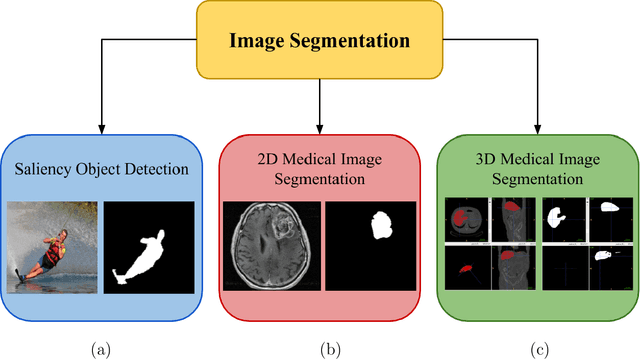
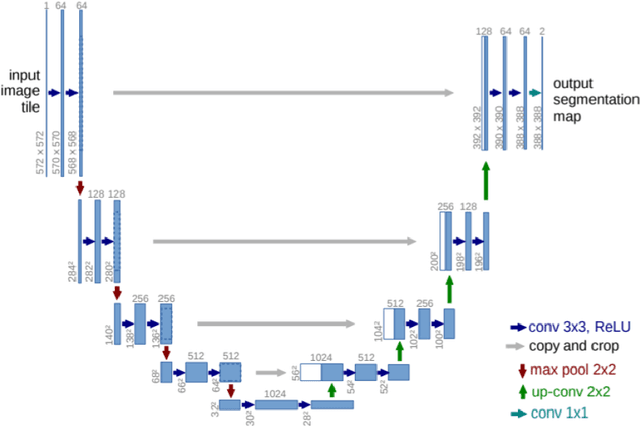
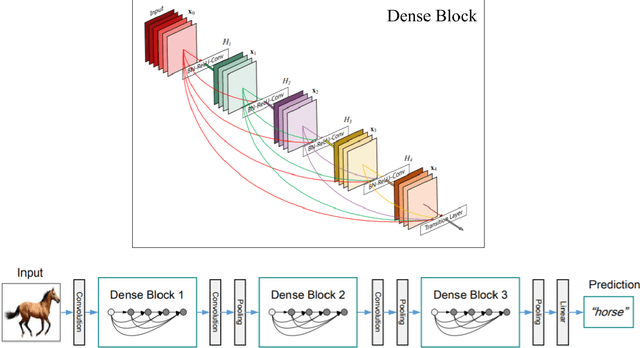
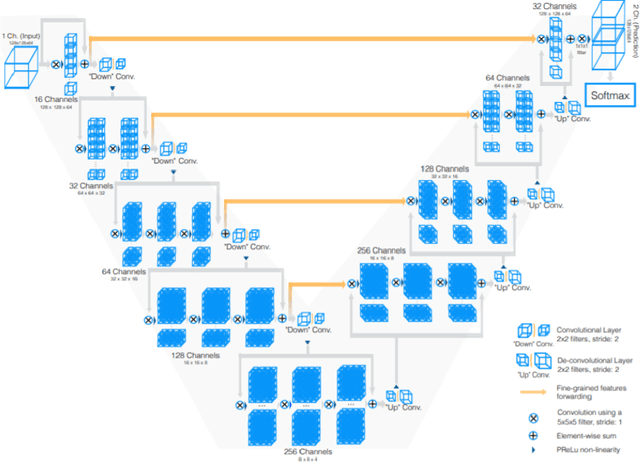
Abstract:Image segmentation is widely used in a variety of computer vision tasks, such as object localization and recognition, boundary detection, and medical imaging. This thesis proposes deep learning architectures to improve automatic object localization and boundary delineation for salient object segmentation in natural images and for 2D medical image segmentation. First, we propose and evaluate a novel dilated dense encoder-decoder architecture with a custom dilated spatial pyramid pooling block to accurately localize and delineate boundaries for salient object segmentation. The dilation offers better spatial understanding and the dense connectivity preserves features learned at shallower levels of the network for better localization. Tested on three publicly available datasets, our architecture outperforms the state-of-the-art for one and is very competitive on the other two. Second, we propose and evaluate a custom 2D dilated dense UNet architecture for accurate lesion localization and segmentation in medical images. This architecture can be utilized as a stand-alone segmentation framework or used as a rich feature extracting backbone to aid other models in medical image segmentation. Our architecture outperforms all baseline models for accurate lesion localization and segmentation on a new dataset. We furthermore explore the main considerations that should be taken into account for 3D medical image segmentation, among them preprocessing techniques and specialized loss functions.
Deep Active Lesion Segmentation
Aug 21, 2019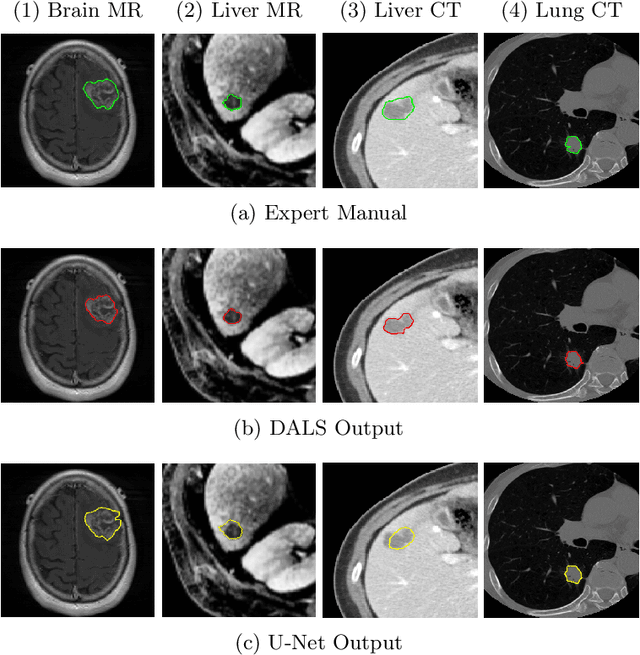

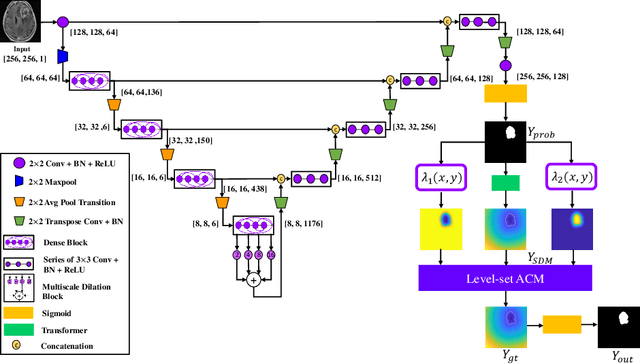

Abstract:Lesion segmentation is an important problem in computer-assisted diagnosis that remains challenging due to the prevalence of low contrast, irregular boundaries that are unamenable to shape priors. We introduce Deep Active Lesion Segmentation (DALS), a fully automated segmentation framework for that leverages the powerful nonlinear feature extraction abilities of fully Convolutional Neural Networks (CNNs) and the precise boundary delineation abilities of Active Contour Models (ACMs). Our DALS framework benefits from an improved level-set ACM formulation with a per-pixel-parameterized energy functional and a novel multiscale encoder-decoder CNN that learns an initialization probability map along with parameter maps for the ACM. We evaluate our lesion segmentation model on a new Multiorgan Lesion Segmentation (MLS) dataset that contains images of various organs, including brain, liver, and lung, across different imaging modalities---MR and CT. Our results demonstrate favorable performance compared to competing methods, especially for small training datasets.
* Accepted to Machine Learning in Medical Imaging (MLMI 2019)
 Add to Chrome
Add to Chrome Add to Firefox
Add to Firefox Add to Edge
Add to Edge